
Machinima is the use of real-time computer graphics engines to create a cinematic production. The word "machinima" is a portmanteau of the words machine and cinema. According to Guinness World Records, machinima is the art of making animated narrative films from computer graphics, most commonly using the same engines used by video games.

Microsoft Flight Simulator is a series of flight simulator programs for MS-DOS, Classic Mac OS, and Microsoft Windows operating systems. It was an early product in the Microsoft application portfolio and differed significantly from Microsoft's other software, which was largely business-oriented. Microsoft Flight Simulator is Microsoft's longest-running software product line, predating Windows by three years. It is one of the longest-running video game series of all time.

Red Baron is a combat flight simulation video game for MS-DOS created by Damon Slye at Dynamix. It was published by Sierra On-Line in 1990. The game was ported for Amiga and Macintosh computers in 1992.

Falcon 4.0 is a combat flight simulation video game developed by MicroProse and published by Hasbro Interactive in 1998. The game is based around a realistic simulation of the Block 50/52 F-16 Fighting Falcon jet fighter in a full-scale modern war set in the Korean Peninsula.
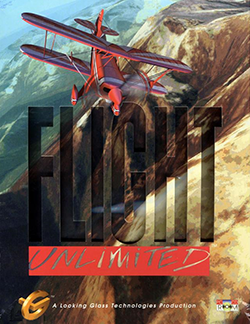
Flight Unlimited is a 1995 aerobatic flight simulator video game developed and published by LookingGlass Technologies. It allows players to pilot reproductions of real-world aircraft and to perform aerobatic maneuvers. They may fly freely, race through floating rings against a timer or take lessons from a virtual flight instructor. The instructor teaches basic and advanced techniques, ranging from rudder turns to maneuvers such as the tailslide, Lomcovák and Immelmann turn.

Strike Commander is a combat flight simulation video game designed by Chris Roberts and released by Origin Systems for the PC DOS in 1993. Its 3D graphics-engine used both gouraud shading and texture-mapping on both aircraft-models and terrain, an impressive feat at the time. Significant plot elements were presented through in-game cut-scene animations, a hallmark storytelling vehicle from Chris Robert's previous Wing Commander games. Strike Commander has been called "Privateer on Earth", due to the mercenary role-playing in the game.

The Movies is a business simulation game created by Lionhead Studios for Microsoft Windows and ported to Mac OS X by Feral Interactive. Players run a Hollywood film studio, creating films that can be exported from the game. The Movies was released in November 2005 to positive reviews and several awards, but sold poorly. An expansion, The Movies: Stunts & Effects, was released in 2006.
Combat flight simulators are vehicle simulation games, amateur flight simulation computer programs used to simulate military aircraft and their operations. These are distinct from dedicated flight simulators used for professional pilot and military flight training which consist of realistic physical recreations of the actual aircraft cockpit, often with a full-motion platform.
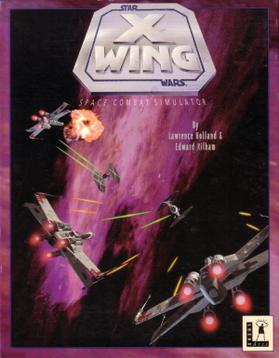
Star Wars: X-Wing is a space simulation video game, the first of the X-Wing combat flight simulation games series. The player's character flies starfighters, including the X-wing, for the Rebel Alliance. The narrative precedes and parallels the events of Star Wars Episode IV: A New Hope.

Grand Prix 2, released in North America as "Grand Prix II", is a racing simulator released by MicroProse in 1996. It is a sequel to Formula One Grand Prix. It was made under an official FIA license that featured the Formula One 1994 season, with all of the circuits, teams, drivers and cars. The cars were painted with liveries reflecting the races that did not allow tobacco and alcohol sponsors.

Flight Unlimited III is a 1999 flight simulator video game developed by Looking Glass Studios and published by Electronic Arts. It allows players to pilot simulations of real-world commercial and civilian aircraft in and around Seattle, Washington. Players can fly freely or engage in "Challenge" missions, such as thwarting a theft or locating Bigfoot. The development team built on the general aviation gameplay of Flight Unlimited II, with more detailed physics and terrain, more planes, and a real-time weather system. Roughly half of Flight Unlimited II's team returned to work on the sequel, supported by new hires.
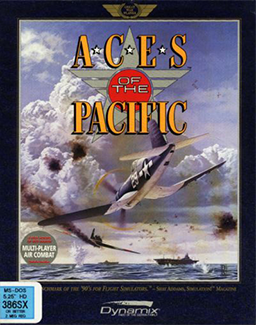
Aces of the Pacific is a combat flight simulation game developed by Dynamix for MS-DOS compatible operating systems and published by Sierra On-Line in 1992. The game takes place during World War II. Players can choose to play a single mission or a career path in United States Army Air Forces, United States Navy, United States Marines, Imperial Japanese Army, or Imperial Japanese Navy. Dynamix followed-up the game with Aces Over Europe in 1993.

Wings is a World War I video game developed and published by Cinemaware. It was released for the Amiga in 1990. The action sequences are similar in style to those of the 1927 silent film Wings.

Dogfight: 80 Years of Aerial Warfare is a combat flight simulator video game developed by Vektor Grafix and published by MicroProse in 1993 for the PC DOS, Atari ST and Amiga. In North America, the game was released with the title Air Duel: 80 Years of Dogfighting.
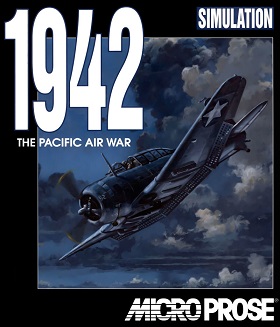
1942: The Pacific Air War is combat flight simulation developed and published by MicroProse for the PC on the DOS operating system in 1994. It is based on the U.S. and Japanese Pacific War conflict from 1942 to 1945. An expansion pack, 1942: The Pacific Air War – Scenario, was released in 1995. A sequel, European Air War, was released in 1998. Tommo purchased the rights to 1942 and digitally publishes it through its Retroism brand in 2015.

Star Wars: TIE Fighter is a 1994 Star Wars space flight simulator and space combat video game, a sequel in the Star Wars: X-Wing series. It places the player in the role of an Imperial starfighter pilot during events that occur between The Empire Strikes Back and Return of the Jedi.

AV-8B Harrier Assault is a combat flight simulator/realtime strategy game developed by Simis and first published by Domark in 1992. An updated version using SVGA graphics was released later the same year, alternatively known as SVGA Harrier. In 1994, a modified version of the SVGA version was released for the classic Mac OS under the new name Flying Nightmares, which was later ported to 3D0.
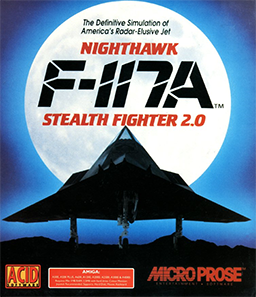
F-117A Nighthawk Stealth Fighter 2.0 is the 1991 remake of the 1988-1990 Cold War combat flight simulator video game F-19 Stealth Fighter by MicroProse, itself a remake of 1987's Project Stealth Fighter. The original PC version was updated with a corrected aircraft model once the Lockheed F-117 Nighthawk was declassified and with 256-color VGA graphics instead of the original's 16-color EGA, among other changes.

Crimson Skies is an arcade flight video game developed by Zipper Interactive and published in 2000 by Microsoft Games. Although a flight-based game, Crimson Skies is not a genuine flight simulator, as the game is based less on flight mechanics than on action. According to series creator Jordan Weisman, Crimson Skies is "not about simulating reality—it's about fulfilling fantasies".
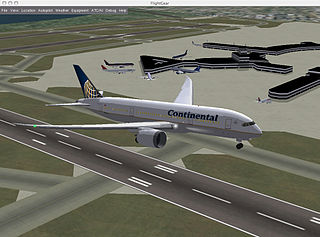
A flight simulation video game refers to the simulation of various aspects of flight or the flight environment for purposes other than flight training or aircraft development. A significant community of simulation enthusiasts is supported by several commercial software packages, as well as commercial and homebuilt hardware. Open-source software that is used by the aerospace industry like FlightGear, whose flight dynamics engine (JSBSim) is used in a 2015 NASA benchmark to judge new simulation code to space industry standards, is also available for private use. A popular type of flight simulators video games are combat flight simulators, which simulate combat air operations from the pilot and crew's point of view. Combat flight simulation titles are more numerous than civilian flight simulators due to variety of subject matter available and market demand.



















